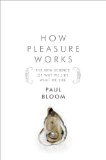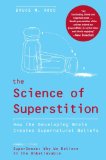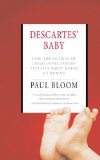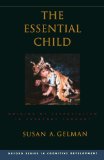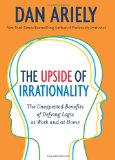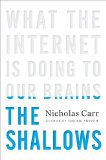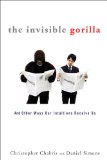psychological essentialism – 4 books
June 19, 2010
Psychological essentialism has been getting some attention lately as a result of Paul Bloom’s recent book How Pleasure Works. See, for example, Jonah Lehrer on essentialism in ‘How Pleasure Works’ at the Frontal Cortex, or the discussion between Bloom and Peter D. Kramer at Slate.
(How Pleasure Works at amazon.co.uk)
When I saw Lehrer’s review I happened to be reading another book that draws on essentialism, this time to explain irrational beliefs: SuperSense: Why We Believe in the Unbelievable by Bruce M. Hood. (Supersense at amazon.co.uk) A paperback edition is to be issued later this month with the title The Science of Superstition: How the Developing Brain Creates Supernatural Beliefs.
Here is an excerpt from SuperSense (p246-247):
Throughout this book I have been arguing that beliefs in the supernatural are a consequence of reasoning processes about natural properties and events in our world. This includes a mind design for detecting patterns and inferring structures where there may be none. Our naive theories form the basis of our supernatural beliefs, and culture and experience simply work to reinforce what we intuitively hold to be correct. This is why the sense of being stared at is such an interesting model for the origin and development of supernaturalism. Children are not told that humans can detect unseen gaze. In fact, it’s not something they readily report that they can do. Nevertheless, young children and many adults think that vision works by something leaving the eyes. So when they experience episodes of seeming to detect unseen gaze, this belief simply emerges naturally as an unquestioned ability. It is not even considered supernatural by most people. Children were not told to think this. This model shows how the combination of intuitive theories, pattern detecting, and eventual support from culture produces a universal supernatural belief.
I think that something very similar may be going on for other supernatural beliefs. The notion of psychological contamination we examined in earlier chapters emerges naturally out of psychological essentialism, which has its roots in our naive biological reasoning. Again, this way of thinking is not something that we teach our children. Intuitive dualism and the idea that the mind can exist independently of the body is another. All of these ways of thinking are both naturally emerging and yet supernatural in their explanations of the world.
… We may put away childish things, as Corinthians suggests, but we never entirely get rid of them. Education can give us a new understanding and even progress to a scientific viewpoint, but development, distress, damage, and disease show that we keep many skeletons in our mental closet. If those misconceptions involve our understanding of the properties and limits of the material world, the living world, and the mental world, there is a good chance that they can form the basis of adult supernatural beliefs.
Bloom’s earlier book is Descartes’ Baby: How the Science of Child Development Explains What Makes Us Human, originally published by Basic Books in 2004. (Descartes’ Baby at amazon.co.uk)
Product description from the publisher:
All humans see the world in two fundamentally different ways: even babies have a rich understanding of both the physical and social worlds. They expect objects to obey principles of physics, and they’re startled when things disappear or defy gravity. Yet they can also read emotions and respond with anger, sympathy, and joy.
In Descartes’ Baby, Bloom draws on a wealth of scientific discoveries to show how these two ways of knowing give rise to such uniquely human traits as humor, disgust, religion, art, and morality. How our dualist perspective, developed throughout our lives, profoundly influences our thoughts, feelings, and actions is the subject of this richly rewarding book.
Another book on psychological essentialism is The Essential Child: Origins of Essentialism in Everyday Thought (Oxford in Cognitive Development) by Susan Gelman (Oxford University Press, 2005). (The Essential Child at amazon.co.uk)
Product description from the publisher:
Essentialism is the idea that certain categories, such as “dog,” “man,” or “intelligence,” have an underlying reality or true nature that gives objects their identity. Where does this idea come from? In this book, Susan Gelman argues that essentialism is an early cognitive bias. Young children’s concepts reflect a deep commitment to essentialism, and this commitment leads children to look beyond the obvious in many converging ways: when learning words, generalizing knowledge to new category members, reasoning about the insides of things, contemplating the role of nature versus nurture, and constructing causal explanations. Gelman argues against the standard view of children as concrete or focused on the obvious, instead claiming that children have an early, powerful tendency to search for hidden, non-obvious features of things. She also attacks claims that children build up their knowledge of the world based on simple, associative learning strategies, arguing that children’s concepts are embedded in rich folk theories. Parents don’t explicitly teach children to essentialize; instead, during the preschool years, children spontaneously construct concepts and beliefs that reflect an essentialist bias. Essentialist accounts have been offered, in one form or another, for thousands of years, extending back at least to Aristotle and Plato. Yet this book is the first to address the issues surrounding essentialism from a psychological perspective. Gelman synthesizes over 15 years of empirical research on essentialism into a unified framework and explores the broader lessons that the research imparts concerning, among other things, human concepts, children’s thinking, and the ways in which language influences thought. This volume will appeal to developmental, cognitive, and social psychologists, as well as to scholars in cognitive science and philosophy.
